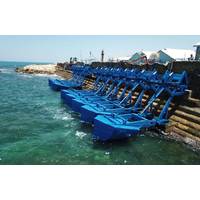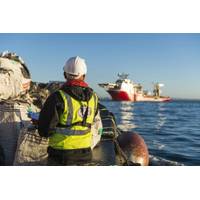International testing, inspection, certification and consulting engineering group RINA reports it has grown strongly during 2014, propelled by an upturn in marine, acquisition in the energy sector and international diversification. Turnover for 2014 grew 13 percent to Euro 333 million. EBITDA (adjusted) grew to Euro 37.7 million.
Ugo Salerno, Chairman and CEO of RINA S.p.A., said, “2014 was an important year for RINA. We were not only able to seize opportunities for new business around the world such as major development projects in Egypt and Turkmenistan, but we were also able to take advantage of signs of recovery in shipping and opportunities in energy. We now look forward with optimism because our spirit of innovation, our deep research and strong competences give us a platform for success. The hard work of our people, their talent for constantly reinventing themselves to meet the market needs and their ability to cross frontiers and feel at home everywhere underpin RINA’s development.”
Results for RINA’s energy business line stood out in 2014, growing 23 percent thanks to the consolidation of the acquisition of materials specialist CSM (Centro Sviluppo Materiali) and outstanding growth in countries such as Indonesia and Brazil, the group said.
Floating offshore units have a specific focus within RINA. They include offshore support vessels, mobile drilling rigs, offshore field construction units, oil and gas import and export offshore terminals and floating production and storage units. Class and class related specialist services to this sector grew throughout 2014, totaling at the year’s end about 1.45 million GT and 320 units in operation or ongoing new building and conversion projects.
The marine business grew 5 percent. RINA Services, the group company which delivers ship classification and certification ended the year with a classed fleet of 5,166 vessels totaling 34 million GT and with an order book for 680 vessels totaling 4.6 million GT. RINA also confirmed its place as the global leader in classification of passenger ro-ro ferries and ro-ro vessels in general and as a major player in the cruise ship sector, whether measured by classed fleet or new order book.
New orders in 2014 included two mega cruise ships for MSC Cruises. The 5,300-passenger vessels will be built by Fincantieri and will include innovative open spaces and very high environmental performance. RINA Services is also classing a significant jumboization project for MSC Cruises, the Renaissance Project. Also in the cruise sector Seabourn Cruise Line ordered two 604-passengers luxury cruise vessels to RINA class at Fincantieri and RINA class was chosen for two similar vessels to be built for Silversea Cruises.
RINA also focused on providing value-added services to shipowners, always aiming to reduce costs, reduce risks and improve fleet availability. The strong service ethic of RINA’s global network led shipowners to move 400 ships totaling 2.6 million GT to RINA class during 2014.
Within the rest of the group, business assurance grew 3.5 percent and transport and infrastructures grew 20 percent and for the first time were able to compete in major projects outside Italy. Food testing and certification grew 13 percent with Agroqualità, RINA’s food company, becoming the leader in South Italy and the second largest nationally.
RINA’s consulting engineering company D’Appolonia grew 7 percent thanks to diversification and international growth in areas such as the Mozambique, India, Uruguay and the U.S.
RINA’s group strategy of growth through targeted acquisition continued with the acquisition of material specialist CSM, Tunisian food laboratory Lab21, Brazilian certification company Bracert and marine survey company Hayes Stuart in Canada. This international growth was underpinned by the capital investment of Intesa Sanpaolo and Vei Capital who together provided Euro 25 million in capital and put at the disposal of the group a further Euro 75 million to fund the international growth plan.











